These photos are from the Sumpter Valley Railway, a narrow gauge (3' between the rail head instead of the regular 4'8 1/2") excursion railway located in the Blue Mountains, near Baker, Oregon. The railroad was established in 1890 to haul passengers, logs, and lumber. In 1947 the railroad was shut down and all the rail was ripped up. In 1971 the railroad was reborn and is still steaming into the future. Sumpter Valley Railway has two operating steam locomotive a 2-8-2 and a 2 truck Heisler. I am featuring pictures of the 2-8-2, for pictures of the Heisler check out Larry's Train Page. For more in depth information on the history and current status of the Sumpter Valley Railway, check out their home page at, svry.com.
I am fortunate to have a great railroading buddy on the Internet that is a fireman on the SVRy. He invited me to go down and see how the operation of the railroad works. Besides having a great time, I was so amazed at the whole operation that I had to join. I am now a training brakeman on the SVRy. The brakeman throws switches, couples and uncouples cars, sets the cars hand brakes, and assist passengers on and off the train. Here are a few pictures of my experience at Sumpter. Pictures can give you an idea of what it is like, but I'd recommend visiting the Sumpter Valley to experience the full picture or you can just click on the images. ;-)
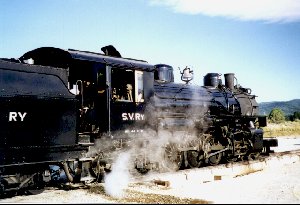 |
No. 19 steaming up for the days work ahead of hauling passengers. |
| After emerging from the engine house there are many tasks to be accomplished before the engine can run. |
 |
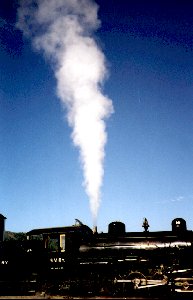 |
This sight is called "lifting the pops," it is a safety test that occurs every day and insures that if the boiler pressure were to get too high there would be a way to release the excess steam. The column of steam extends more than 40 feet into the air. |
| These are a few of the controls the engineer has to deal with. The lever at the top is the engine throttle, the gauges below tell the engineer what the pressure is in the train's brakes, the lever in front of that is the control for the brakes, the lever right below that is the engine brakes, and the two levers off to each side control the bell and sand the track. |
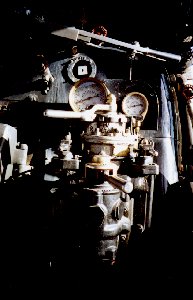 |
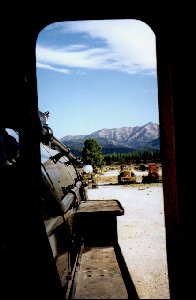 |
The view out the engineers window, what a beautiful sight.
|
| The mighty beast at rest. |
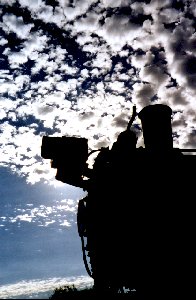 |
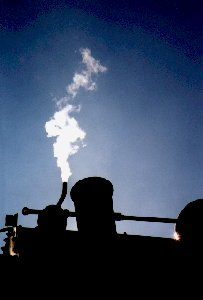 |
The steam that you see is coming out of the dynamo that powers the head light, tender light, cab lights, and radio on the locomotive. |
| With the whistle blowing No. 19 makes her way on to the road. |
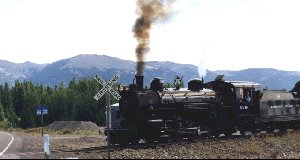 |
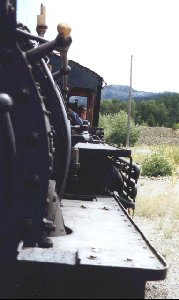 |
A railroad volunteer lounging around waiting for the next run. Boy, what a life! |
| There I am coupling the brake hoses between the locomotive and car. |
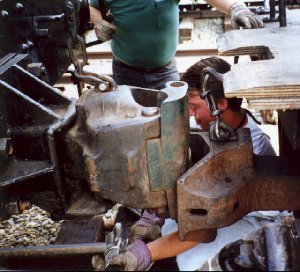 |
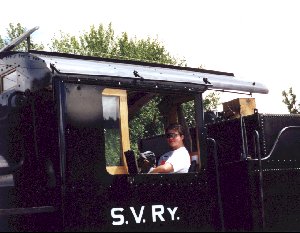 |
Boy, that guy looks like a natural fireman. |
| This little diesel is sometimes used to move around cars. The name of it is "Little Big Horn" because it used to have a Nathan P-5 on top of it. |
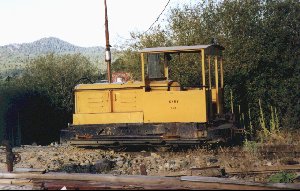 |
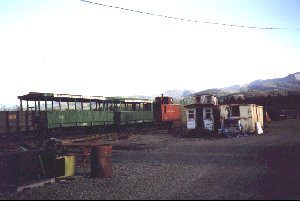 |
The cars off to the left are used on the passenger train, there is also a Pullman inside one of the engine houses. |
| The cars off to the left are used on the passenger train, there is also a Pullman inside one of the engine houses. This is a modified DRGW boxcar that was converted into a passenger car. |
 |
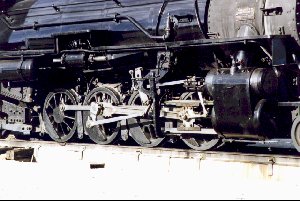 |
Each one of the joints on the running gear has to be lubricated which usually takes two and one half hours. |

